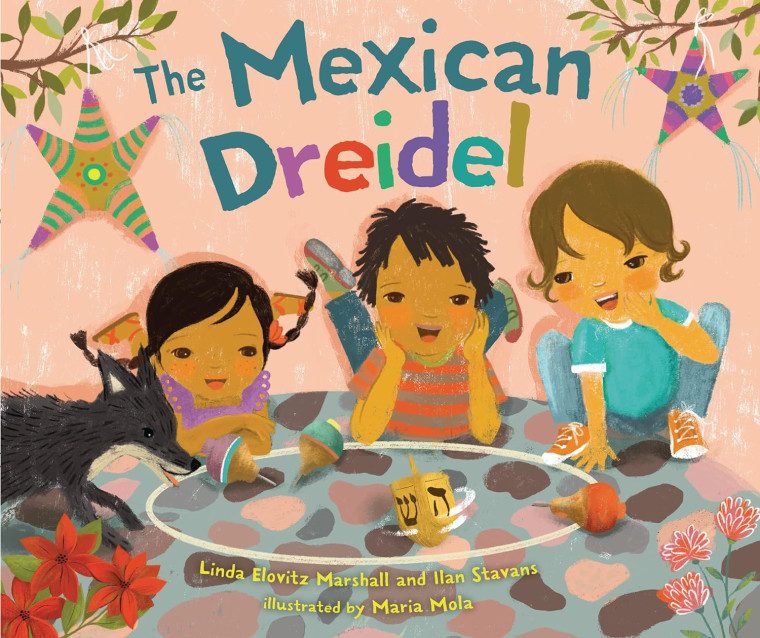As Jewish families gather to celebrate the eight days of Hanukkah, the Festival of Lights can deliver a powerful message of endurance during difficult times, according to Mexican American author and scholar Ilan Stavans.
“Whether it is now, when antisemitism is rising, or in the past, during the Holocaust, or even further back, during the Spanish Inquisition, Hanukkah is a reminder that we have to find a way to endure,” Stavans said. “Hanukkah reminds us that as we go from one diaspora to another, we can get inspiration from moments of resistance in the past to continue our story.”

Stavans recently co-authored a children’s Hanukkah book, “The Mexican Dreidel,” with Linda Elovitz Marshall. It tells the story of a magical wooden dreidel (a four-sided spinning top) that a Jewish grandmother gifts to her grandson in an unnamed Mexican town.
For Stavans, who grew up in Mexico speaking Spanish and Yiddish, the Jewish Festival of Lights reminds him of the ways that his family kept their Jewish heritage alive in Mexico.
“We celebrated Hanukkah in Mexico. We had latkes, which are potato pancakes that you eat with sour cream and applesauce,” he recalled. “Every night, cousins would come to our house, or we would go to our grandmother’s house to play dreidel and have a piñata — this is a tradition in Mexico that both Jews and non-Jews have in their holidays.”
Stavans said many children in Mexico play with trompos (colorful plastic or wooden spinning tops that have a metallic tip) during the Christmas season. And his book introduces both the trompo and the dreidel to show how toys can help children connect with their heritage and build strong friendships at early ages.
For Jewish children specifically, the dreidel reminds them of the miracle of Hanukkah — each side of the toy has a Hebrew letter, and together these four letters form an acronym that translates roughly into English as “A big miracle happened here.”
According to Jewish tradition, the Holy Temple in Jerusalem was rededicated after the liberation of the city from the Syrian Greek empire over 2,000 years ago.
At the time, Jews, who under occupation could not celebrate their faith publicly, lit the temple menorah with just enough oil for one day. And, as the story goes, it burned miraculously for eight days.
Believers during Hanukkah light a branch of their menorah candelabra each night to remember the victory of a small group of Jewish fighters who liberated Jerusalem all those years ago.
But beyond this ancient story of occupation and liberation, Stavans says, there is another message about endurance that resonates today.
“This is also a story about resisting against assimilation, which is an ongoing concern for many Jews in the diaspora. How do you keep your own tradition? How do you keep your own sense of self? How do you keep rooted?,” he said.
For Stavans, maintaining his heritage after moving to the United States became a focus of his writing. In the last three decades, the Amherst College professor has written over 30 books on American, Latino and Jewish identities.
Source: | This article originally belongs to Nbcnews.com










